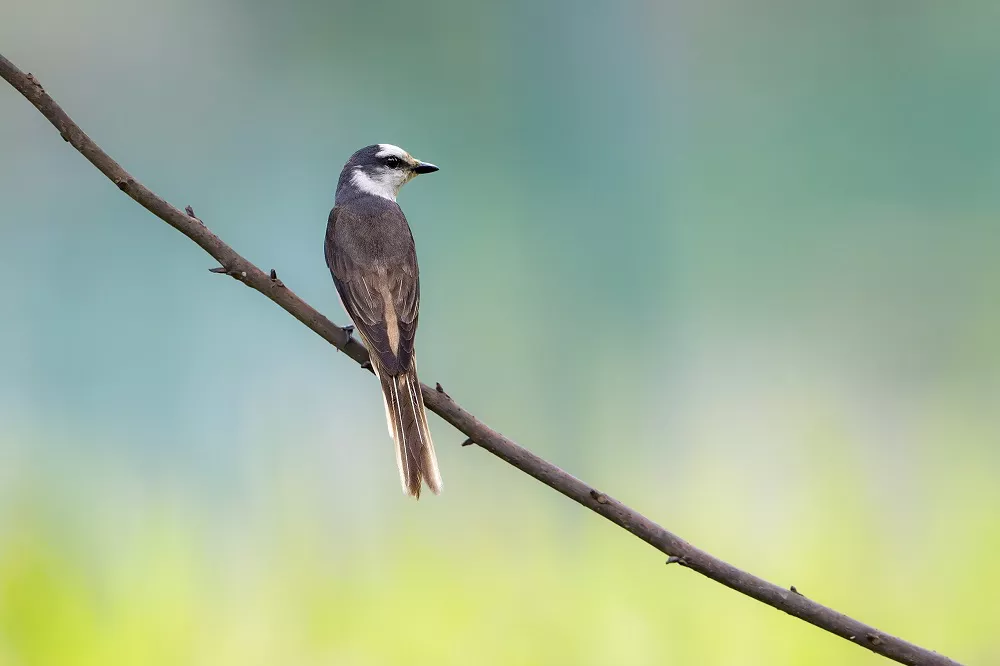The Ashy Minivet (Pericrocotus divaricatus) is a small bird that belongs to the family Campephagidae. It is widely distributed across Asia, from the eastern Himalayas to southern China, Vietnam, Laos, Thailand, Cambodia, and Indonesia. The Ashy Minivet is a migratory bird and its distribution varies seasonally. In this article, we will explore the habitat and distribution of the Ashy Minivet in detail.
Habitat:
The Ashy Minivet is a forest bird and is found in a variety of habitats ranging from subtropical forests to evergreen and deciduous forests, bamboo forests, and secondary growth forests. It is also found in forest edges, clearings, and sometimes in gardens and parks. The bird prefers open habitats with scattered trees, where it can easily catch insects in flight. It is also seen near rivers and streams, especially during the breeding season.
Distribution:
The Ashy Minivet is a resident bird in parts of its range, while in other areas, it is a summer breeding visitor. During the breeding season, it is found in the eastern Himalayas, northeastern India, Myanmar, southern China, northern Thailand, and northern Laos. During the winter, it migrates to southern China, Taiwan, Vietnam, Cambodia, Thailand, and the Malay Peninsula. In Indonesia, it is found on the islands of Sumatra, Java, and Bali.
In India, the Ashy Minivet is found in the eastern Himalayas, from Sikkim and Arunachal Pradesh to Nagaland and Manipur. It is also found in the states of Meghalaya, Mizoram, and Tripura. In China, it is found in the provinces of Yunnan, Sichuan, and Guizhou. In Southeast Asia, it is found in Laos, Cambodia, Vietnam, Thailand, and Peninsular Malaysia.
Behavior:
The Ashy Minivet is a social bird and is usually seen in small groups or pairs. The bird is active during the day and is a skilled flyer, catching insects in mid-air. It feeds mainly on insects, including beetles, ants, wasps, and grasshoppers. During the breeding season, it also feeds on fruits and berries.
Breeding:
The breeding season of the Ashy Minivet varies across its range. In India, it breeds from March to August, while in China, it breeds from May to July. The bird builds a cup-shaped nest using spider webs, moss, and twigs. The nest is usually placed in the fork of a branch or on a thin branch. The female lays 2-4 eggs, which are incubated by both parents for about two weeks. The chicks are fed by both parents and fledge in about two weeks.
Threats:
The Ashy Minivet is not considered a globally threatened species, but its populations are declining in some parts of its range due to habitat loss and fragmentation. The bird is also hunted for food and trapped for the cage bird trade in some parts of Southeast Asia. Conservation measures such as protecting its habitat and enforcing laws against hunting and trapping are needed to ensure the survival of the Ashy Minivet.
In conclusion, the Ashy Minivet is a small but beautiful bird that is widely distributed across Asia. It is a forest bird and is found in a variety of habitats. Its populations are declining in some parts of its range due to habitat loss and hunting. Conservation measures are needed to ensure the survival of this species.


 Facebook
Facebook  Instagram
Instagram  Youtube
Youtube 